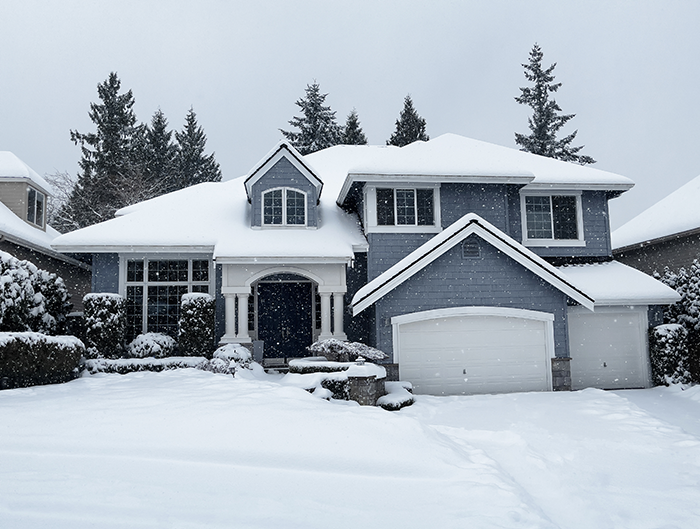When to clear the snow off your roof
From the warm, cozy comfort of your home, it’s easy to forget that there is snow building up on the roof. Nevertheless, too much snow and ice can cause damage to your roof and your home. When should you clear the snow off your roof?
 Here is what you need to know.
Here is what you need to know.
A real risk to your home
You may think your home can withstand anything, but remember that its frame is designed for normal conditions.
Too heavy a load on the roof can mean real consequences to your home:
- The roof could collapse
- Cracks could appear in the walls
- Water could infiltrate the home, etc.
Does roof pitch make a difference?
Obviously, a flat roof will collect more snow, since it can’t slide down the sides. The same issue occurs on roofs with a lower slope.
But roof pitch isn’t the only issue—if you have a shingled roof, freeze-thaw cycles can cause ice to form under the shingles. The result: risk of damage and water infiltration.
Snow or ice?
Freeze-thaw cycles are common in the current climate. Although roofs are designed to support the weight of normal precipitation, ice can tip the scales a bit.
This is even more of an issue given that ice accumulation can prevent snow from falling off the roof, which can further exacerbate the problem.

When to clear the snow off your roof
Generally speaking, if more than 60 cm (2 feet) of snow has accumulated on the roof, specialists recommend removing it.
In any case, it’s a good idea to keep an eye out for the following signs that it may be time to lighten the load:
- After a heavy (wet) snowfall
- Significant snow accumulation
- Accumulated ice preventing snow from falling off the roof or icicles forming on the edge of the roof (icicles are also a sign that the attic is poorly ventilated)
- Damage to interior walls or ceilings
- Unusual noises or creaking sounds
- Risk of snow or ice falling on you or your visitors
If you need to clear your roof
If you decide to clear the roof, avoid using metal tools. This specialized company recommends using wood or plastic tools instead. They also suggest leaving a 3- to 5-cm layer to avoid damaging the roof covering.
If you don’t feel safe doing it yourself, you should contact a specialist. Not only is it dangerous to clear the roof yourself, you also run the risk of damaging your roof by attempting to remove ice incorrectly.
Are you passionate about real estate? Subscribe to the Centris.ca newsletter now.
See also: